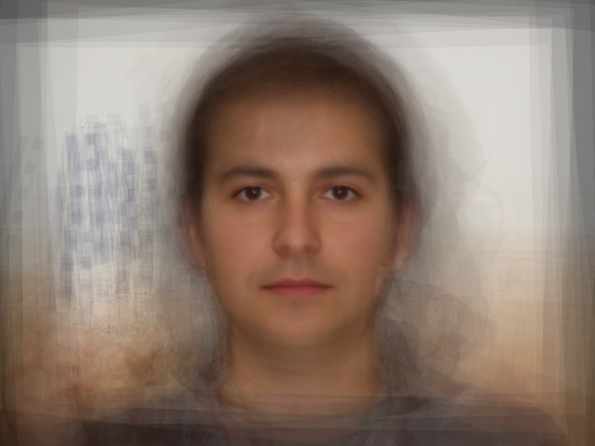
The Natural History Museum (Geometric Morphometrics Laboratory) and the Geology Department of University of Lisbon organized the first Geometric Morphometric Workshop in Portugal, on May 6, 7, and 10, 2004. Luis Azevedo Rodrigues planned this workshop with the support of Dr. Vanda Faria dos Santos and Dr. Mário Cachão. It was sponsored by FLAD (Fundação Luso-Americana para o Desenvolvimento), FUL (Fundação da Universidade de Lisboa) and the Geology Department, University of Lisbon.
Most of the 22 participants were from Portugal but there were four from Spain, Italy and Argentina. Their interests were diverse – Biology (zoology, ecology), Anthropology, Medicine (osteoporosis), Palaeontology (Echinoidea). For most of the participants this was their first introduction to this methodology. Prof. F. James Rohlf (Stony Brook, SUNY) lectured on the more theoretical aspects of morphometrics and Luis Azevedo Rodrigues (Natural History Museum/University of Lisbon) and Jesús Marugán-Lobón (Universidad Autónoma of Madrid) covered the more practical problems.
The first day was occupied with lectures of Prof. Rohlf concerning review/introduction to matrix methods, data of morphometrics (landmarks, outlines, homology, allometry, symmetry) and Methods for landmark data (Superimposition methods; centroid size as an estimate of size), thin plate spline and image unwarping.
The second day started with an introduction to Kendall shape space, Kendall tangent space, shape variables such as partial warps and tangent space coordinates. After a break the workshop continued with methods for outline data, Fourier methods, Eigenshapes, Superimposition using sliding semilandmark points. After lunch Prof. Rohlf described exploratory analyses of shape variation (Relative Warps and Principal Component Analysis) and confirmatory analyses (MANOVA, multivariate regression, partial least squares, discriminant analysis).
At the end of this very full day the participants were separated into three groups: one with Prof. Rohlf in which participants the discussed the more theoretical details of their projects; another group with Luis discussed practical aspects of application geometric morphometrics in individual projects; the last group with Jesús individual photographs of the participant’s faces for the final exercise – during this process Jesús also discussed the practical aspects and concerns of this data acquisition methodology. After half an hour everyone switched groups. This format permitted a more informal discussion and contact with the instructors than would otherwise be possible in such a short workshop.
The final day was devoted to hardware and software for collecting and analysing data. Luis and Jesús started to introduce the attendants to different software (tpsDig; tpsSplin; tpsRegr; tpsSuper; Morpheus). In every program the attendants used the some of the photos taken in the second day. After each exercise (data acquisition, exploratory and confirmatory methods), the instructors presented the analyses and their results as a review of the methods covered in the workshop. The average image is shown below. After the lunch, Luis presented the results of his current research project – “Sauropod tracks/manus and pes osteology – aplication of geometric morphometrics” and Jesús presented his work on “Morphometric exploration of the macroevolutionary disparity in the skull of Archosaurs”. The workshop finished with a demonstration by Luis of 3D data acquisition with Microscribe.
Despite the fact that this workshop was the first formal introduction to geometric morphometrics in Portugal, the local media demonstrated an interest and the Portuguese Public Television interviewed Prof. Rohlf about morphometrics and Luis about his fieldwork. While the format of the workshop with very compressed (just two and a half days of presentations), It seems to have been quite successful.

Average image of the 25 workshop participants and instructors. Registered using 16 landmark points around the eyes, nose, and mouth.